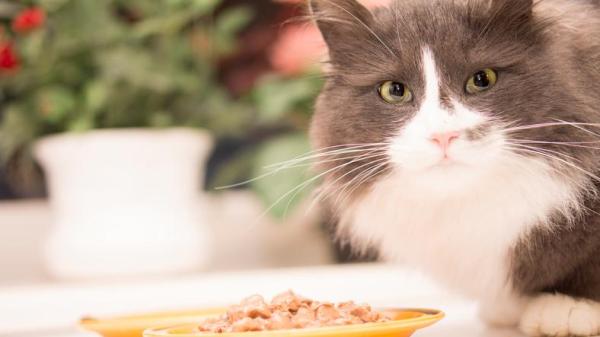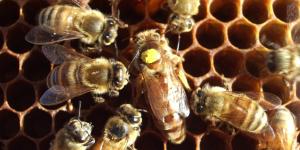Most Common Food Allergies In Cats



See files for Cats
Allergies appear when the immune system develops an adverse or exaggerated response to an allergen. An allergic reaction leads to high release of histamine in the body. This hypersensitivity occurs as a consequence of the ingestion of certain foods or compounds.
Food allergies in felines can cause several symptoms which include: diarrhea, vomiting and skin reddening. If your cat is showing any of these signs or symptoms it is essential that you go to the veterinarian for a proper diagnosis. A vet will also be able to establish an appropriate treatment. Allergies are however incredibly common, and for this reason, in this AnimalWised article we would like to discuss what the common food allergies in cats are. We will also cover; possible symptoms, treatment and prevention methods.
Cat food allergy: Difference between food intolerance and a food allergy?
There is still some confusion about the difference between allergies and food intolerances. These two clinical cases are quite different, and both require specific treatments, therefore they should not be confused.
The first key difference between the two is that a food intolerance does not generate a hypersensitive response by the animal’s immune system. Digestive discomfort associated with food intolerance is generated by the inability (or great difficulty) that the body has digesting certain molecules or nutrients. In many animals, this condition may be associated with another underlying disease.
When an animal suffers from a food allergy, the immune systems identifies a component of the diet as a foreign body. The animal’s body then reacts and ‘fights’ against the foreign body, in order to protect itself. Therefore, it reacts in an exaggerated (or hypersensitive) manner, activating its defense mechanism. This defense mechanism comprises of a high release of histamine in the bloodstream.
In general, food allergy symptoms tend to be more complex and delicate to treat than an intolerance. When an animal is intolerant to certain foods, the simple act of removing this component from their diet is usually effective to avoid any more digestive discomfort. However, allergies require a detailed analysis to recognize pathogens and establish a hypoallergenic diet appropriate to the needs of each patient.
It is also important to note the difference in symptoms between an intolerance and an allergy. Intolerances usually cause digestive discomfort and metabolic failure, and may also involve a certain degree of toxicity. Food allergies, in addition to gastrointestinal discomfort, also tend to cause dermatological, respiratory and neurological symptoms. Food allergies are also considered to be more severe than an intolerance.
Signs of cat food allergy
Food allergies are characterized by a complex symptomatology that includes gastrointestinal, dermatological, neurological, behavioral alterations, etc. Therefore, we must reaffirm the importance immediately taking your cat to the veterinarian if you observe any strange symptoms or unusual behavior.
Below, we have summarized the main symptoms of food allergies in cats to help you!
- Dermatological symptoms: the dermatological alterations associated with food allergies are concentrated in the region of the neck and face of the cat. Its skin may suffer from redness, peeling, hair loss, scabs and ulcers. Many pets also develop otitis externa as a result of a food allergy.
- Excessive itching and scratching: cats suffering from food allergies can experience intense itching and may scratch constantly. This scratching is done to help relieve discomfort. In some cases, your cat might also lick itself excessively, which in fact might make the sensitive area redder.
- Gastrointestinal symptoms: vomiting, diarrhea, colitis and irritable bowel syndrome.
- Respiratory symptoms: breathing difficulties and asthma.
- Neurological symptoms: seizures may occur in more advanced cases of food allergies.
- Alterations in behavior: many pets may experience hyperactivity and hyperesthesia as a consequence of a food allergy. This can cause an increase in their aggressiveness and cause alterations in their usual behavior, such as: a tendency to isolate or hide, appear to be less sociable than usual, lose interest in their food or toys, etc.

Cat food allergy test
When identifying any symptoms of a food allergy in your cat, it is essential to go to your veterinarian immediately. You must bear in mind that, as long as the allergen is not identified and remains hidden in the cat’s diet, the symptoms will continue advancing and harming the animals state of health. Therefore, an early diagnosis is essential in order to minimize possible damages to your cat’s health.
In principle, many foods can trigger an allergic reaction, such as eggs, dairy, soy, wheat, corn, chicken, fish, etc. Therefore, a diet of elimination is essential in verifying which components may be generating the hypersensitive response in your cat's body. These diets are specially designed to verify (by elimination) the sources of proteins that are acting as an allergen to the cat.
In a veterinary clinic, a professional will also carry out a detailed physical examination and, in some cases, may need to perform an allergy test. These tests are performed in order to verify the different immunological responses that the cat has against possible allergen agents.
In addition, to arrive at a specific diagnosis, the veterinarian will need to have a detailed history of the feeding of each patient. This detail will allow a vet to analyze what the cat has eaten and note anything that might have acted as a possible allergen. If you change the feed of your cat periodically, it is also important to inform the vet about the products that you have already offered your cat. If you provide homemade food to your cat, it will be important to detail all the products used in this foods preparation.
How to treat cat food allergy
After completing the diagnosis, a veterinarian can establish a hypoallergenic diet according to the needs of your cat. For kittens with mild allergies, a veterinarian may recommend hypoallergenic feeds made with low molecular weight proteins. This feed facilitates the digestion and assimilation of said nutrients.
However, these products are not usually effective in the treatment of more severe allergies. If your kitten has a more complex allergic case, you should be patient and follow the recommendations of your veterinarian. Little by little, a professional can design a diet compatible with your feline’s, which will offer it the essential nutrients it needs without harming its health. In many cases, it may be more advisable to administer a homemade and natural diet, which will allow you to control and eliminate any harmful components. In this way, when establishing food for cats with food allergies, it is important to figure out which food or allergen is causing this allergy.

Food allergy in cats: prevention
Actually, it is a little complicated to talk about a specific prevention for food allergies. Each cat is a unique individual and its body has its own peculiarities. For this reason it is difficult to predict which elements can trigger an allergic reaction in each cat. However, we can follow some guidelines to promote its digestive process and avoid exposing it to pathogens. Here are some summarized:
- Offer adequate preventive medicine to conserve good health and strengthen your animal’s immune system. Don’t forget to make periodic visits to the veterinarian and respect its letter of vaccination and/or periodic deworming. You can also check with your vet about allergy tests for cats.
- Provide your animal with a balanced and good quality diet. If you choose to give your animal dry feed as a basis for its diet, remember to choose products of optimal quality which contain high quality protein for easy digestion. And if you choose to follow a BARF or homemade diet, do not stop taking into consideration the guidance of your veterinarian.
- Avoid difficult-to-digest foods and the ingredients with a high allergen risk. Some food are more difficult to digest than others and they can easily generate adverse reactions, such as: cereals and their derivatives (soy, corn, wheat). Eggs and dairy are among the main allergens, therefore they should be avoided.
- If you notice any alteration in the appearance or behavior of your cat, do not hesitate to to your veterinarian immediately.
This article is purely informative. AnimalWised does not have the authority to prescribe any veterinary treatment or create a diagnosis. We invite you to take your pet to the veterinarian if they are suffering from any condition or pain.
If you want to read similar articles to Most Common Food Allergies In Cats, we recommend you visit our Other health problems category.







